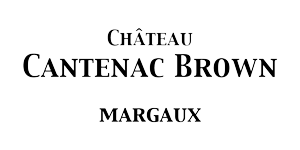Chateau Cantenac Brown, Grand Cru Classé from 1855, in Margaux was founded 200 years ago by a Scottish John Lewis Brown. Recognizable by its spectacular Tudor-style chateau, Cantenac Brown is still family owned today and has announced the construction of a new, unique winery made entirely of raw earth.
Since 2020, Château Cantenac Brown has been engaged in the construction of a new raw earth cellar. In this article, we give you all the details of the raw earth. Thought to respect the environment, this new raw earth cellar is a symbol of eco-responsibility and innovation at the service of our wines. Moreover, it allows us to put all the power of the earth at the service of our objective: that of making the best wine by sublimating the terroir of Margaux. Discover all the subtleties of the raw earth in this article.
What is raw earth?
Raw earth is a material composed of pebbles, sand, clay, silt and metallic oxides as well as a binder. It allows the construction of solid and environmentally friendly buildings using no chemical resources. As a result, raw clay is one of the oldest composite materials used in the world.
In addition, raw clay requires very little energy for its manufacture and does not create waste, making it one of the most environmentally friendly building materials. It is also possible to use locally sourced raw earth to reduce the impact of transportation on construction.
Why use raw earth?
Raw earth does not act as an insulator but has excellent thermal inertia. In other words, the use of this material allows efficient temperature management inside the new winery and reduces the energy requirements for heating or cooling.
In addition, the mud walls regulate the humidity extremely well. As a wine lover, you know how important hygrometry is in the proper aging and conservation of wine. Thus, this new winery will have qualities that are essential to the excellence of Cantenac Brown wines.
The use of raw earth: an ancestral know-how
Raw earth is one of the oldest building materials in the world. However, its use has been gradually reduced in favor of other materials such as cement or concrete. That being said, the properties of raw earth and the know-how of the people who use it make it possible to develop, once again, the attractiveness of the material. The preservation of this know-how was also an argument for the construction of a new raw earth cellar.
In addition, there are different techniques to carry out these constructions:
- Pisé: a formwork is put in place and the raw earth is poured, then packed inside it.
- The cob: a mixture of earth and straw is fixed on a wooden frame called half-timbering.
- Compressed earth brick (CEB): bricks are formed from raw earth but often require the use of additional cement.
- Checkerboard: a technique imported from Italy in which blocks of raw earth are alternated with pebbles.
- Straw earth: a technique similar to cob with more straw and which requires the use of a formwork in addition to half-timbering.
The use of raw earth: the power of earth for our wines
The benefits of raw earth and its eco-responsible dimension make it the ideal material for the construction of a new winery. It will have the ideal thermal and hygrometric properties to ensure the development and aging of our wines before they reach your table. The construction of this new winery is an obvious choice to work even more precisely on our wines and to accompany us on the road to excellence specific to the Grands Crus Classés of 1855. There is thus no doubt that this new cellar is one of the assets of the Château to raise our ambitions even higher and to make the Margaux terroir shine all over the world.


